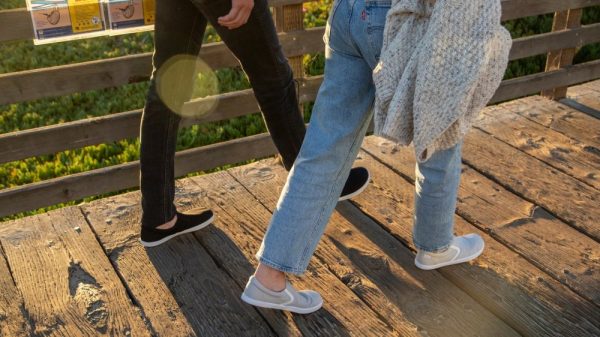If you’re looking for a high-caliber cardio workout to burn calories and build muscle, a great way to get it is with cross-country skiing.
This season, take some time off your board or alpine skisand hit the trails Nordic style for a full-body toning workout. Even if you’re new to flat-land skiing, many ski resorts offer lessons where you can pick up the technique basics and hit closeby trails. U.S. Cross-Country Ski Team member and Olympian Kris Freeman, who represented the United States at the 2010 Winter Olympics and the 2014 Winter Olympics, tells us how to get the most from your time on the trails.
You’ll be sore the next few days, but trust us. It’s worth it—for the health boost andthe fun. Here’s how to get started:
GET THE GEAR YOU NEED
Aside from warm clothing designed for insulation and breathability (that’s a given) you’ll need skis, boots, and poles to propel you forward. All cross-country style skis have bindings that allow the heel to move freely while the ball of the foot is fixed to the ski, but the two different skiing styles—ski touring and skate skiing—require slightly different skis and boots. Invest in your own if you’ll be going out often, or rent from any ski area with cross-country trails. Either way, though, it’s good to know exactly what you need.
FOR SKI TOURING:
Because you’ll glide longer distances (spending more time in your boots) while ski touring in the backcountry, put comfort first. Get a boot with a snug fit, but with enough room for your preferred socks (i.e. more room for thicker cushioning, less for thin socks). When you lace up your boots, flex your foot fully. If your toes just touch the tip of the boot, the fit is right.
As for skis, go for longer and thinner skis for speed and efficiency. But if you’re heading into deeper snow, you’ll want a shorter and wider ski for maneuverability and flotation to keep you from sinking in. In general, go shorter if you’re less experienced.
FOR SKATE SKIING:
Skate skiing (literally, a skating motion) is meant for quick outings or races. Comfort is less important than efficiency here. Boots should be the exact size of your foot while wearing your chosen socks. They’ll have more ankle support, and you should have contact with the boot at every point of your foot.
For even greater control while skiing, some go even tighter. Avoid loose skate boots altogether. Skate skis will be shorter (by roughly 10 cm) and lighter than touring skis so you can more easily pick them up off the ground. But they should still be long enough to provide stability and glide. Narrower skis will be faster, and with skate skiing, speed is the goal.
Share this content:
















Post Comment